You can do your own implementation or could use some libraries. For you own implementation I would suggest using either ViewPager passing Views instead of fragments or PageTransformer if you want something more elaborate.
If you prefer libraries, I would recommend InfiniteCycleViewPager, sayyam's carouselview or you can go in a tour here: https://android-arsenal.com/tag/154, there is a lot of libraries with different implementations.
Example of implementation of an image slider using ViewPager:
First create your activity's xml with a ViewPager component:
<?xml version="1.0" encoding="utf-8"?>
<android.support.v4.view.ViewPager xmlns:android="http://schemas.android.com/apk/res/android"
xmlns:app="http://schemas.android.com/apk/res-auto"
xmlns:tools="http://schemas.android.com/tools"
android:id="@+id/view_pager"
android:layout_width="match_parent"
android:layout_height="match_parent"
tools:context="com.stackoverflow.imageslider.MainActivity">
</android.support.v4.view.ViewPager>
Then in your activity's onCreate method instantiate the ViewPager and create an adapter for it:
ViewPager viewPager = findViewById(R.id.view_pager);
ViewPagerAdapter adapter = new ViewPagerAdapter(this, imageList);
viewPager.setAdapter(adapter);
In the ViewPagerAdapter class (that should extend PageAdapter), you will control the images overriding the method instantiateItem():
@NonNull
@Override
public Object instantiateItem(@NonNull ViewGroup container, int position) {
ImageView imageView = new ImageView(context);
imageView.setImageDrawable(imageList.get(position));
return imageView;
}
In this example imageList would be an List that is fulfilled somewhere else.
This example is based in a tutorial from codinginflow.com, and you can also take a look there.
Now let's see a simpler implementation, that would do just like you asked, touching the image sides instead of sliding.
Example of simpler implementation:
Create a layout with an ImageView and two buttons overriding it, one for next image on the right and one for previous image in the left:
<?xml version="1.0" encoding="utf-8"?>
<FrameLayout xmlns:android="http://schemas.android.com/apk/res/android"
xmlns:tools="http://schemas.android.com/tools"
android:orientation="vertical" android:layout_width="match_parent"
android:layout_height="match_parent">
<ImageView
android:id="@+id/imageView"
android:layout_width="match_parent"
android:layout_height="match_parent"
tools:srcCompat="@tools:sample/backgrounds/scenic" />
<LinearLayout
android:layout_width="match_parent"
android:layout_height="match_parent"
android:orientation="horizontal">
<Button
android:id="@+id/buttonPrevious"
android:layout_width="match_parent"
android:layout_height="match_parent"
android:layout_weight="1"
android:background="@android:color/transparent" />
<Button
android:id="@+id/buttonNext"
android:layout_width="match_parent"
android:layout_height="match_parent"
android:layout_weight="1"
android:background="@android:color/transparent" />
</LinearLayout>
</FrameLayout>
Then set the onClick of each button to get the images from a list and set in the ImageView.
final ImageView imageView = findViewById(R.id.imageView);
Button next = findViewById(R.id.buttonNext);
next.setOnClickListener(new View.OnClickListener() {
@Override
public void onClick(View v) {
currentPosition ++;
imageView.setImageDrawable(drawableList.get(currentPosition));
}
});
Button previous = findViewById(R.id.buttonPrevious);
previous.setOnClickListener(new View.OnClickListener() {
@Override
public void onClick(View v) {
currentPosition --;
imageView.setImageDrawable(drawableList.get(currentPosition));
}
});
drawableList would be a Drawable that is fulfilled somewhere else. You could also change to a different kind of image list, doesn't matter. current position would be and int that starts at 0.
For PageTransformer I would recommend Bincy Baby's answer and phantomraa's answer.
In case the link gets broken I'll leave Bincy Baby's code here:
viewPagerMusicCategory.setPageTransformer(false, new ViewPager.PageTransformer() {
@Override
public void transformPage(View page, float position) {
Log.e("pos",new Gson().toJson(position));
if (position < -1) {
page.setScaleY(0.7f);
page.setAlpha(1);
} else if (position <= 1) {
float scaleFactor = Math.max(0.7f, 1 - Math.abs(position - 0.14285715f));
page.setScaleX(scaleFactor);
Log.e("scale",new Gson().toJson(scaleFactor));
page.setScaleY(scaleFactor);
page.setAlpha(scaleFactor);
} else {
page.setScaleY(0.7f);
page.setAlpha(1);
}
}
}
);
I think you could also mix PageTransformer with the examples I gave.
The libraries each one already have a good documentation, if not in the android arsenal you can find it in GitHub, and even if I post some code here, if the library closes, gets outdated or something like that, the code will not be useful anymore.
